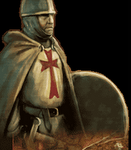
The British 6th Airborne was given the task of securing the most easterly areas of the British landing beaches. This included the estuary of the River Orne and the Canal de Caen. This involved the capture and destruction of the German coastal battery at Merville, and the seizure, intact, of the two bridges at Benouville. One bridge spanned the river Orne and the other the Caen canal. It was vital these two bridges were captured intact to ensure the road inland was open for the advancing Allied Forces due to hit hit the beaches that morning.
The Divisional Commander, Major General Richard Gale decided to send in a special force of six gliders, carrying a force of 180 men. Three gliders would land and take the river bridge. The other three would land and take the canal bridge.For this mission the men of D Company, 2nd Battalion, Oxfordshire and Buckinghampshire Light Infantry (Ox and Bucks) were selected along with Royal Engineers from 'B' company and pilots of the Glider Pilots Regiment.
Major John Howard and his men evacuated the glider as quickly as possible, and attacked the bridge. The German defenders were taken by surprise. Lieutenant Brotheridge who led the attack across the bridge was shot in the neck and became the first Allied soldier killed on D Day. The men from the other two gliders joined the battle and within 5 minutes the bridge was secured. Five men were wounded in the battle for the canal bridge.
Of the gliders which were designated for the Orne river bridge, two landed within 300 and 700 meters from the target and one missed completely. When the bridge was attacked it was found to be undefended, the German troops had fled.
The two bridges had to be secured and held until the rest of the 6th Airborne, which had parachuted in, could relieve the Ox and Bucks, which was no easy task as the Germans launched two ferocious counterattacks including armour (tanks) - this was soon put out of action by Sgt. Thornton using a PIAT (projectile-infantry-anti-tank) gun, from very close range. The paratroops finally arrived at 3.00a.m. to the relief of Major Howard and his men. A brilliant feat had been accomplished, the two bridges had been secured, the road-link was open, ready for the invading allied troops due to arrive from the beacheads.
When you think that the gliders were released from their tug aircraft at 5,000 ft. in darkness, using only maps and stop watches, it is understandable that it was described as the "Finest piece of airmanship of the war"
The Divisional Commander, Major General Richard Gale decided to send in a special force of six gliders, carrying a force of 180 men. Three gliders would land and take the river bridge. The other three would land and take the canal bridge.For this mission the men of D Company, 2nd Battalion, Oxfordshire and Buckinghampshire Light Infantry (Ox and Bucks) were selected along with Royal Engineers from 'B' company and pilots of the Glider Pilots Regiment.
Major John Howard and his men evacuated the glider as quickly as possible, and attacked the bridge. The German defenders were taken by surprise. Lieutenant Brotheridge who led the attack across the bridge was shot in the neck and became the first Allied soldier killed on D Day. The men from the other two gliders joined the battle and within 5 minutes the bridge was secured. Five men were wounded in the battle for the canal bridge.
Of the gliders which were designated for the Orne river bridge, two landed within 300 and 700 meters from the target and one missed completely. When the bridge was attacked it was found to be undefended, the German troops had fled.
The two bridges had to be secured and held until the rest of the 6th Airborne, which had parachuted in, could relieve the Ox and Bucks, which was no easy task as the Germans launched two ferocious counterattacks including armour (tanks) - this was soon put out of action by Sgt. Thornton using a PIAT (projectile-infantry-anti-tank) gun, from very close range. The paratroops finally arrived at 3.00a.m. to the relief of Major Howard and his men. A brilliant feat had been accomplished, the two bridges had been secured, the road-link was open, ready for the invading allied troops due to arrive from the beacheads.
When you think that the gliders were released from their tug aircraft at 5,000 ft. in darkness, using only maps and stop watches, it is understandable that it was described as the "Finest piece of airmanship of the war"



No comments:
Post a Comment